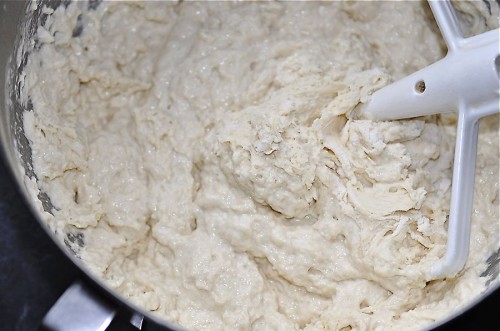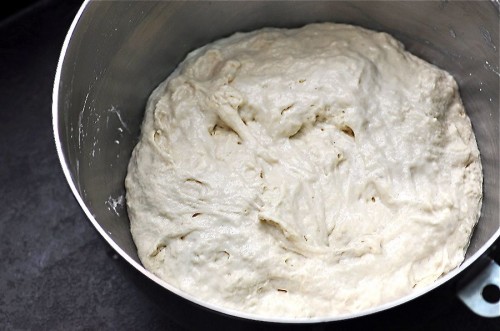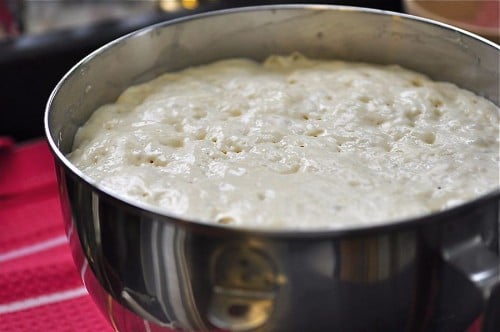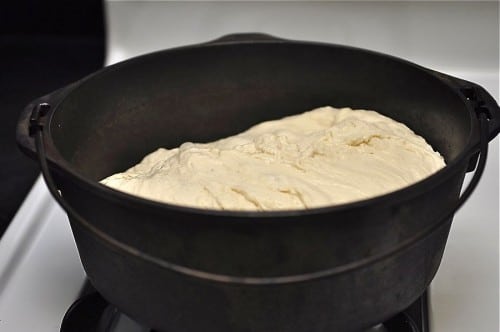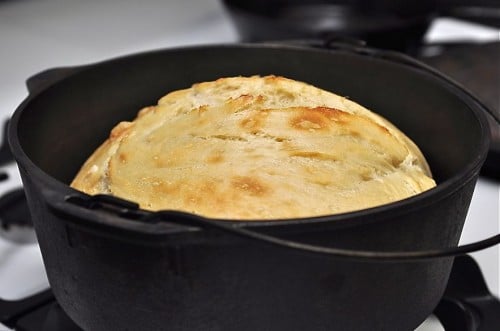A Culinary Adventure: exercising shop skills in the kitchen (aka "Guys Cooking for Guys").
26 June, 2011
Fresh Basil & Thyme bread
3 cups bread flour
1 cup rye flour
1½ TBSP gluten
1½ tsp salt
2 TBSP sugar
1½ olive oil
1½ TBSP butter, in small pieces
2 TBSP milk powder
1⅓ cups 2% milk
Herbs:
½ cup finely chopped fresh basil leaves
⅓ cup finely chopped fresh thyme leaves
1 TBSP finely chopped fresh mint leaves
1½ TBSP 9-grain seed mix.
Put it in the bread machine in this order, fire it off and come back later to enjoy.
The herbs are fairly mild in the final bread; the bread is firm and well-textured.
19 June, 2011
Siah's Grilled Taters
¼ cup olive oil
¾ lb bacon, cooked and crumbled
1 large red onion.
¼ cup white wine vinegar.
2 TBSP white wine vinegar for after taters are grilled.
1 TBSP sugar.
1 cup crumbled blue cheese.
Parsley for decoration.
Boil potatoes until mildly tender. Drain water and half or quarter the taters. Toss taters with olive oil, salt & pepper. Grille until golden brown.
While grilling, sautee onions in 1//4 cup oil, ¼ cup vinegar and sugar (until dissolved).
Mix everything together, and add bacon, cheese & parsley.
18 June, 2011
Spicy Bread
Spices
03 June, 2011
No Knead Artisan Bread
Ingredients:
- 6 cups all-purpose flour (you may substitute up to 2 ½ cups with whole-wheat or other kind of wholegrain flour)
- 3½ teaspoon table salt
- ½ teaspoon active dry yeast, sprinkled over ½ cup of warm water between 110 and 115 degrees
- 3 cups of 110 to 115-degree water
Mix all ingredients together in a bowl of a stand mixer using the paddle attachment (start at the slowest speed to avoid flour flying into the air, and once most of the flour is incorporated, switch to the second-slowest speed to finish).
Alternatively, use a wooden spoon to mix everything in a large bowl. When you are done, your dough will look like this:
Next, use a bowl scraper or a rubber spatula to scrape the sides of the bowl and to compact the dough neatly on the bottom:
Cover the bowl with a plate and allow the dough to rise at room temperature from between 4-5 hours to overnight.
Maybe make the dough in the evening and then bake it the following morning. Or increase the amount of yeast to 2 teaspoons for a quick two-hour rise in a pinch.
The dough is ready to bake as soon as it has doubled in bulk and the surface has become dotted with air bubbles:
Half-an-hour before you intend to bake, place your dutch oven into the oven and set the temperature to 500 degrees F. Set the timer for 30 minutes.
Option: on a well-floured board, fold the bread several times, with a handful or two of shredded cheddar or jack cheese. Maybe add some herbs?
Once the timer goes off, pour your dough directly into the hot pot, using a bowl scraper or a rubber spatula to make sure all of it goes in. Note that it won’t have much of a shape at this point.
Set the timer for another 30 minutes. If your loaf appears a little pale upon emerging from the oven, keep the lid off and return the bread to the oven for the additional 3-5 minutes, or until the loaf is browned to your liking.
Just keep in mind that if you keep it in there for too long, the loaf might stick to the bottom of the pot and be difficult to remove. If this happens, allow it to cool in the dutch oven as the loaf will pull itself from the bottom as it cools and shrinks.
A word of caution: Your pot will become incredibly hot in the 500-degree oven, so be sure to double-up your pot holders!
(Inspired by Paul McLain; this version from the New York Times, with Paul's modifications.)
